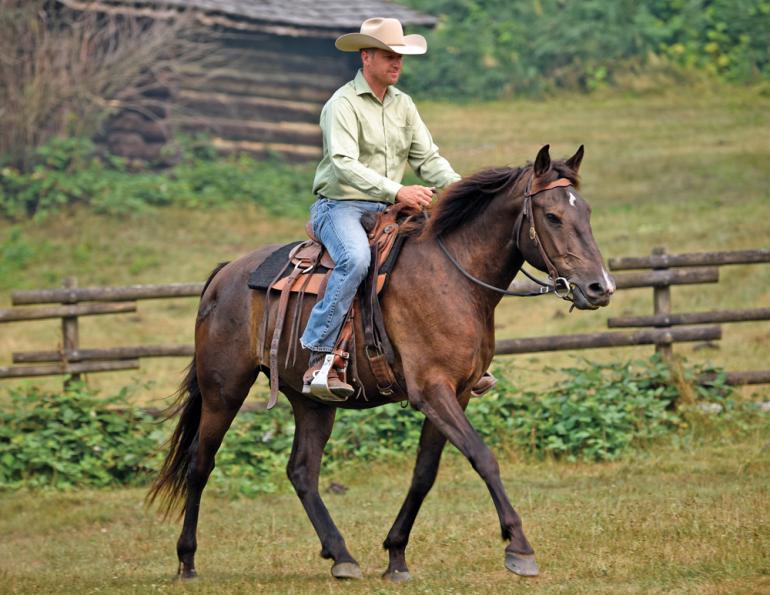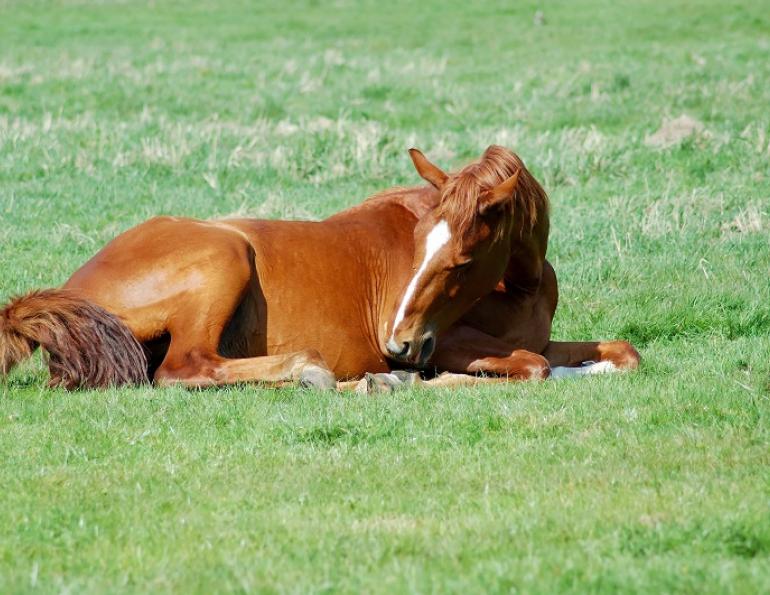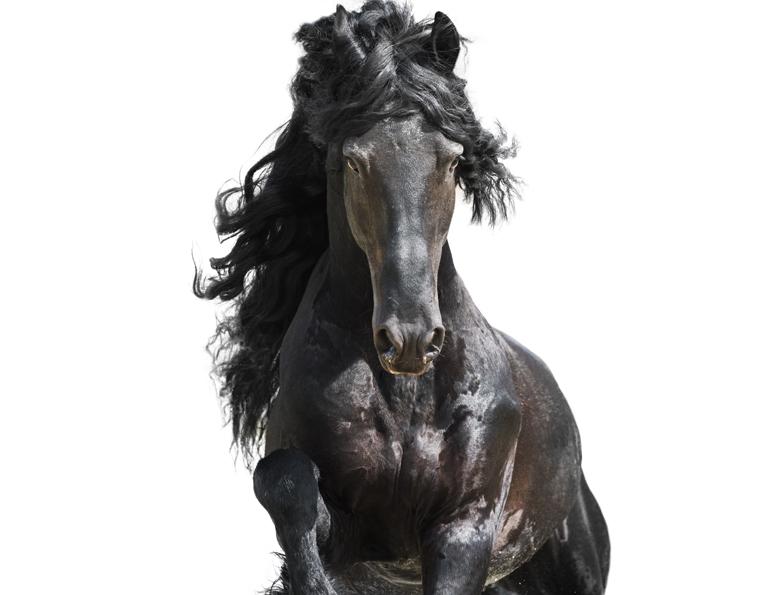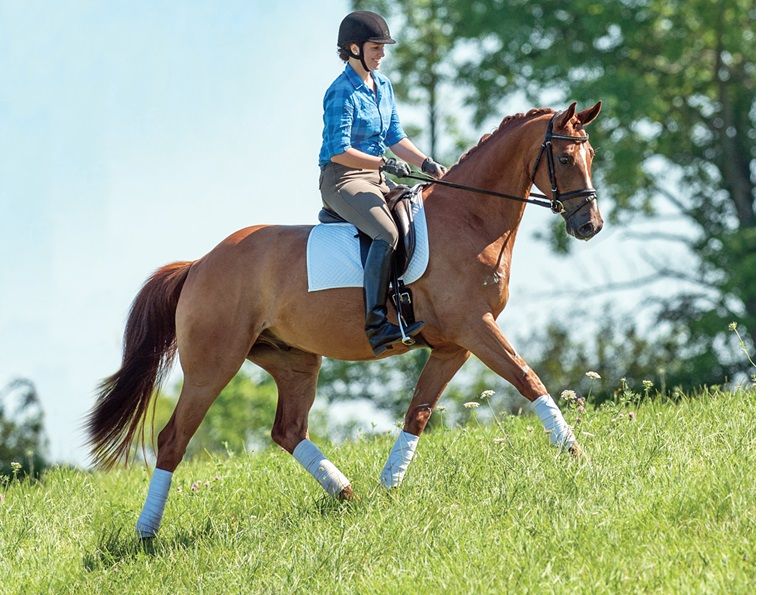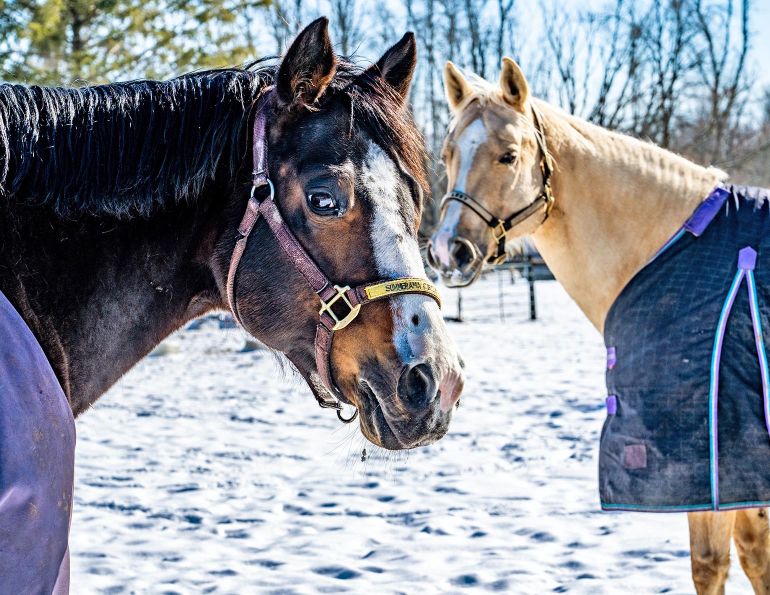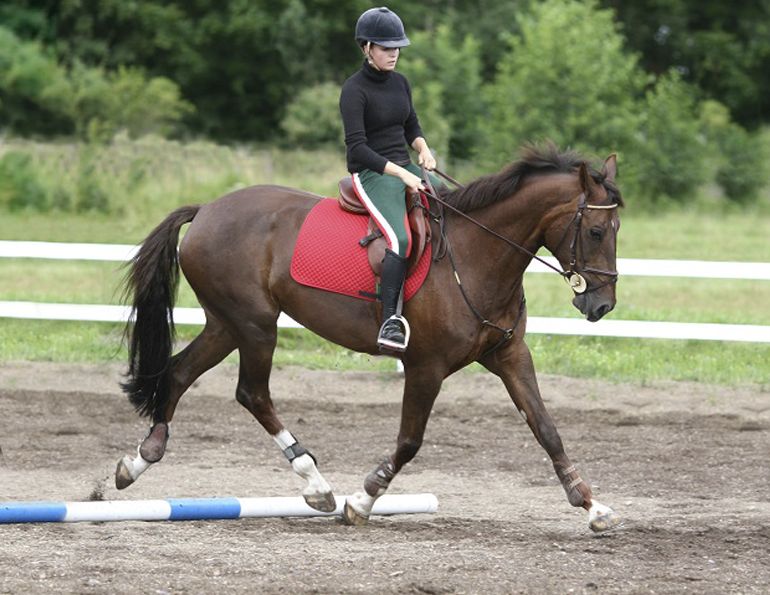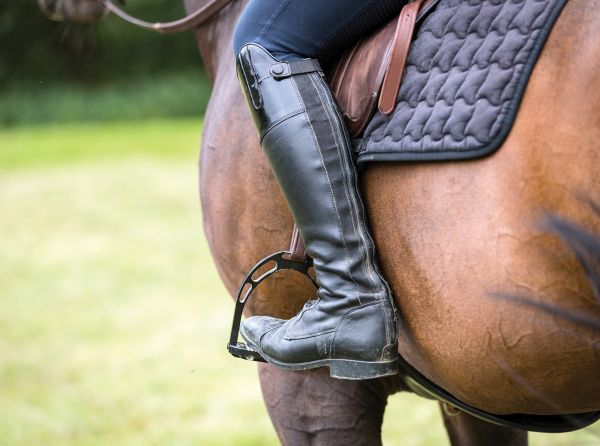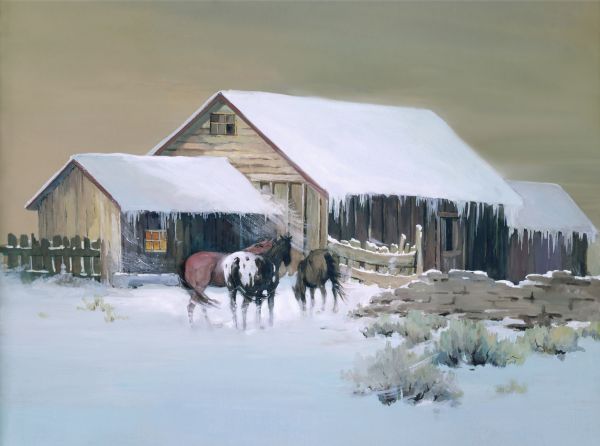Moving Forward Freely and Training Tips
By Jonathan Field
We’ve all had a horse that was hesitant to go forward with ease and willingness. I want to share the story of one such colt I started recently, and some of the strategies I employed to help him “free up.” These techniques work well for horses of all ages.
This article is ultimately about rider self-awareness, timing, and avoiding the overuse of pressure, which unintentionally dulls the horse. Take special note of the tips for success, and the pitfalls many riders face when their horse is dull to their aids.
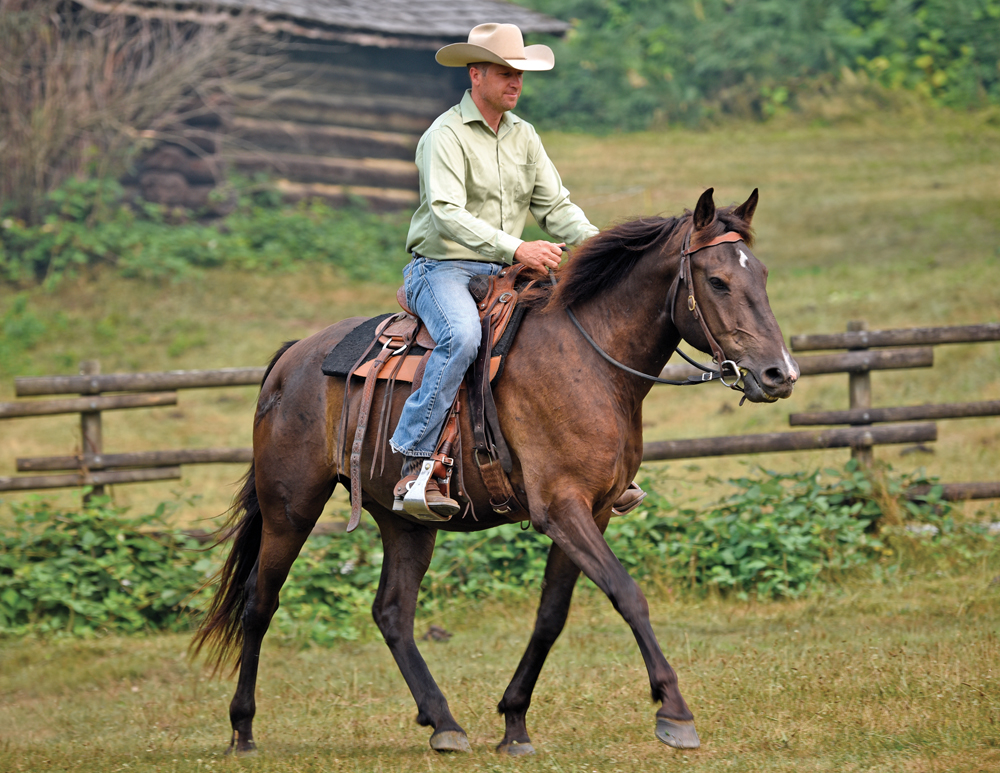
Freely forward. Be careful of conflicting aids. If you ask a young horse to go forward, give him a place to go and allow the reins to slightly drape so there is comfort to move into. At this stage only a few rides in, this colt needs to feel good about forward. Only after this can we start focusing on closing the flexion in his body.
This three-year-old gelding is quite tame and naturally calm. He had learned to stand quietly while receiving care for a hip injury earlier in life. Although he has a nice demeanor and is easygoing, he was also “sticky” about going forward.
A horse like this can often start out a bit sticky and sluggish, and then build resistance over time. In my experience, if this trend is allowed to continue, the tension will often build and can erupt out of nowhere in a huge bucking spell that catches the rider off guard. To avoid that situation for this colt, I used the strategy outlined below to help him move forward freely and easily, without any tension hiding under the surface.
With quiet horses, there’s sometimes a misconception that they are dull, but the contrary is true – they can easily learn to tolerate or even disregard a rider who uses too little feel or timing.
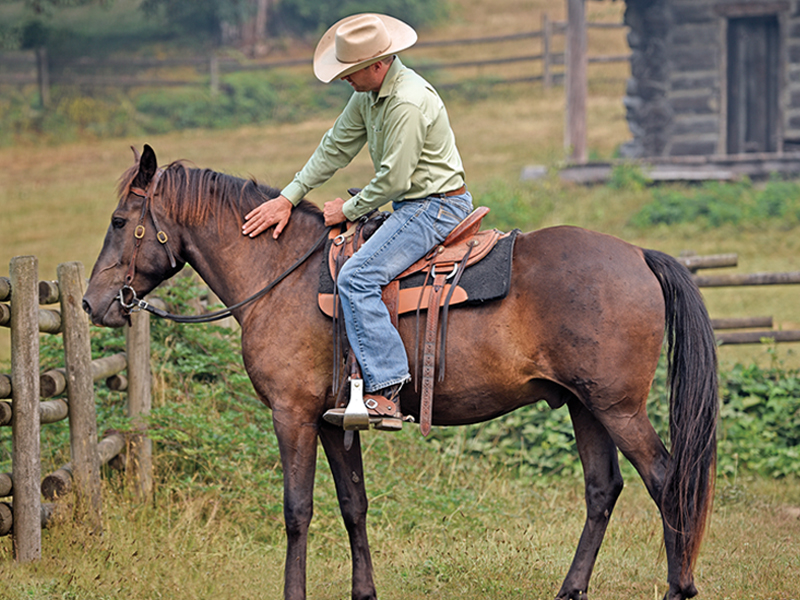
This is probably the most important part. After having traveled across a long distance on a straight line, allow the horse to stop and rest at a predetermined point. Pretty soon you will stride out and your colt will perk his ears forward with interest and look where he is going.
The goal is for the horse to depart forward without strong aids, to continue to go forward without the rider having to ask every stride, and to go straight. The exercises with this colt were done out in the open pasture only after I had several rides in an arena and developed a good stop and bend through the hindquarters. This same concept in principle can be done in the arena by using the whole arena and going to the furthest points, such as end-to-end or corner-to-corner.
This simple concept often proves difficult in application, but the key is to carefully apply this method and be disciplined about not overusing your aids by applying too much pressure. You may also need the assistance of a riding crop.
Pick a point to ride to with the goal of riding right to that location. Having said that, you will also accept a small effort in that direction as a “try” forward.
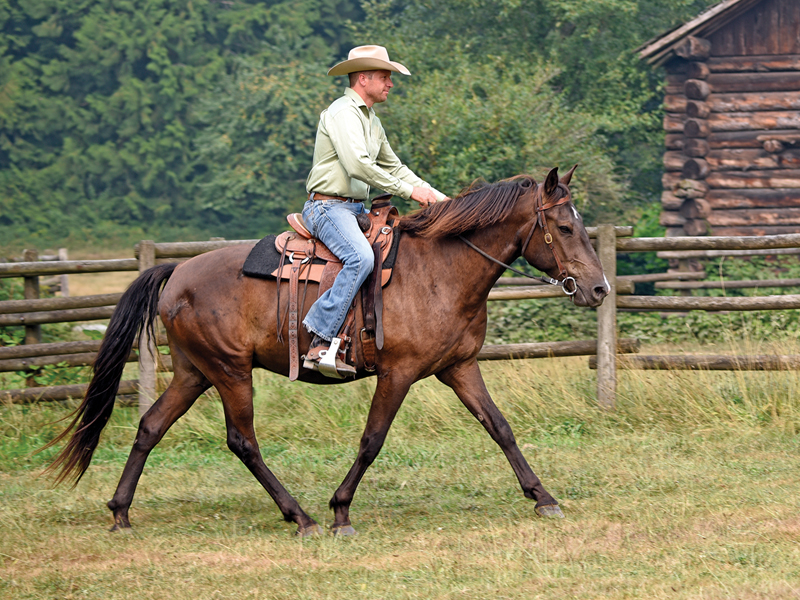
After a short rest, head out across the field in a straight line in another direction. This exercise can be done in an arena, too. The goal is to go to a few points furthest apart from one another, such as corner-to-corner or end-to-end.
Mistakes are made in small ways. If the horse goes forward off the cue, but the rider continues to ask with a grinding leg aid trying to get the horse all the way across the arena, the horse will receive no release for moving out and will begin balking or slowing. Focus more on teaching soft, willing cues forward and less on crossing the arena in one try. Each small surge forward, even if it is only a few steps, must be rewarded by releasing.
Looking at the point you are aiming for - sit up in your saddle, then create an energizing feel through your seat down to your leg with a light squeeze right to your heels. If your horse doesn’t respond, lift the crop into his sight along your side and just behind your leg, and give a few light, obvious waves. If that doesn’t initiate a step forward, begin lightly tapping the crop on the rump until a forward response comes. Release the leg aid immediately, but keep focusing on where you want to go. Repeat this until you get across to your location, and each time you do this, expect a little more of a surge forward before you quit the stimuli. Each “try” forward should be a bit more than the last. By doing this, after several times going across you should be moving into a forward canter. When you reach the end, be sure to rest your horse in the exact location you chose – and facing the outside of the riding arena or field. Stay there at least twice as long as it took to get there, then turn and go back across.
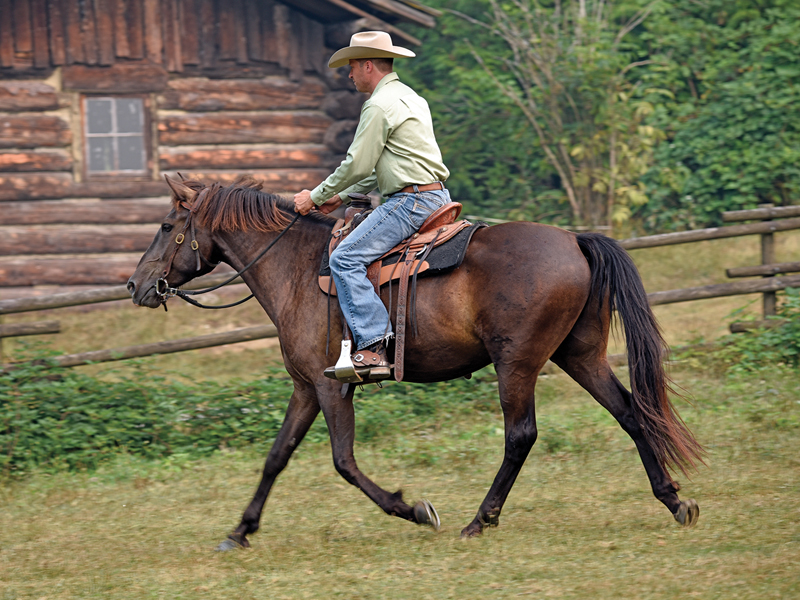
He’s starting to get that look that says it’s his idea to get going – ears up and a forward thought. He also knows he’s on his way to a sweet spot to rest a moment.
A word about safety: As speed picks up along with responsiveness, be ready to bend and turn your horse if he tries to buck or goes too fast and starts taking you across rather than you taking him across.
Remember, circles focus a horse inward, while long straight lines with rest points at the end open him up. Every warm-up ride, I determine if the horse has more forwardness or more balkiness, and on that basis I decide what needs to be done in that riding session.
With a really sticky colt, I integrate this exercise many times throughout the session, and then begin to add a few circles in the middle of the arena before we get to my rest point at the opposite end. Over time, I expect the horse to hold this forwardness longer before the rest point.
Over the years, I have found this exercise helps sticky horses become easy to move out long-term. I am often asked if this exercise will be effective with an old school horse dulled by years of beginner riders. Yes! These horses brighten up and perk their ears, and life becomes more pleasant for them. I am also asked if the benefits of this exercise will transfer over to other riders. Yes, but only for a few minutes because when the rider overuses the forward aids, these colder-blooded types will usually go back to their old ways of just putting up with the rider and shutting down.
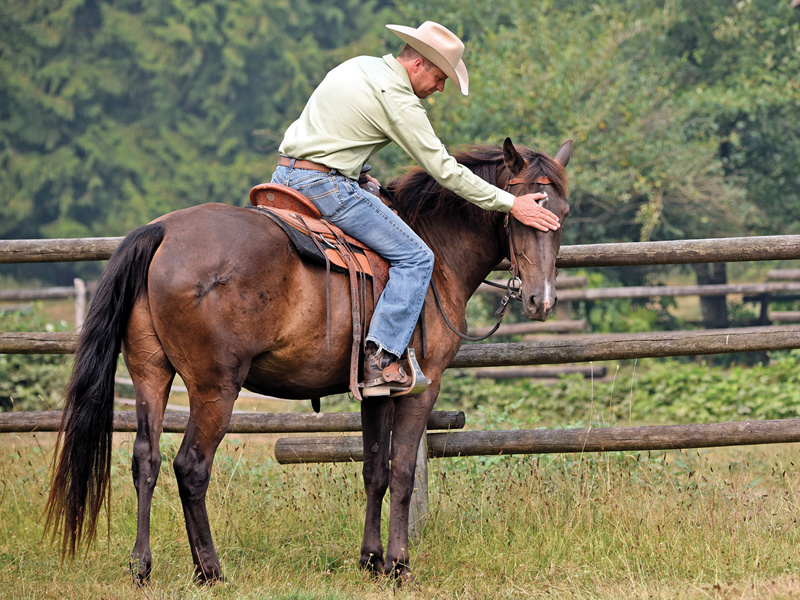
When I’m helping a horse learn a new task or follow the feel of a rider, I remind myself of what it must be like to be a horse, being ridden and guided by another being. Remember that horses don’t owe us a thing and we have a responsibility to pay close attention to all aspects of their lives including care and training. When teaching a new concept, remember: “We’re here for a good time, not a long time.” Ask your horse for a good respond and then reward him quickly. Don’t get greedy and ask again shortly after.
Tips for Success
- Squeeze lightly with the seat and leg aids, then lightly tap with a riding crop until the horse goes forward. When he does move forward, release the squeezing and tapping and just ride forward. If the light squeeze doesn’t work, don’t squeeze harder and begin kicking, and thus take over the responsibility for forwardness.
- Don’t overuse your seat and leg aids when the horse moves out. I’ve actually seen wear marks on the sides of horses whose riders have taken over the full responsibility for the forwardness and self-carriage.
- Don’t do too many circles and tight turns.
- Avoid conflicting aids – for example, asking to go forward with one set of aids while pulling back on the reins at the same time.
- Don’t kick the horse to go as it will shorten the stride rather than lengthen it. I’ve never seen a jockey kick a horse to go.
- Use light, rhythmical tapping that slowly intensifies, rather than one big tap on the rump with a crop. You need pressure that the horse can beat to make him more responsive, rather than causing him to tense up in anticipation of one powerful tap.
Although circles are the enemy of going forward freely, accurate circles are great for the overly-forward horse. The horse has less tendency to look out and “think” forward if another circle is right in front of him. Horses that already have a hard time with forward need a spot out in front of them to get to. Without it, they must simply think that they hate running laps, so why not just get thick and start shutting down?
I hope this helps you down your path.
Stay Inspired by Horses!
Photos by Angie Field.
This article was originally published in the Early Summer 2019 issue of Canadian Horse Journal.



